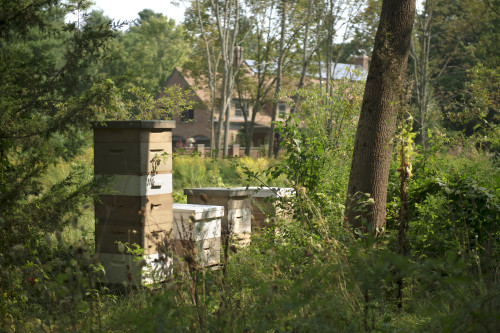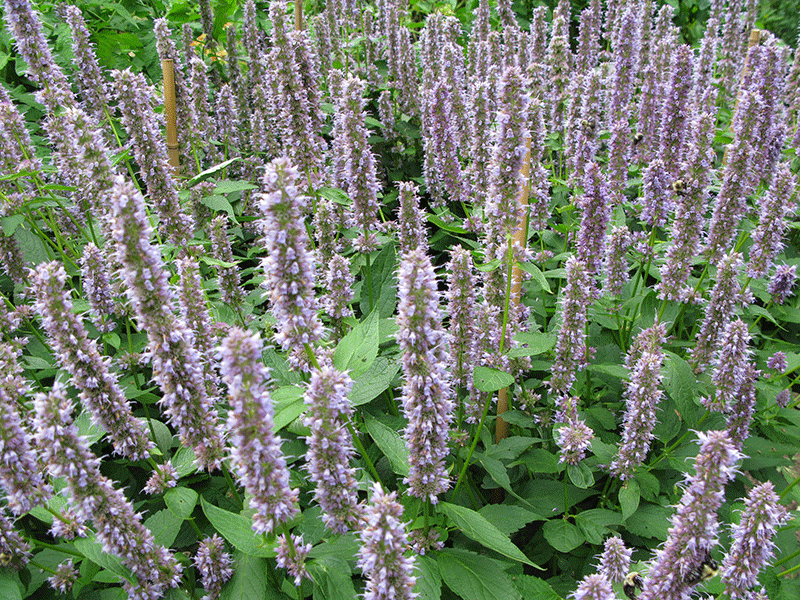Great HOUZZ post on Beekeeping
HOUZZ just came out with a nice little article on beginning beekeeping. Six of my long-term clients have taken on bees, and with this delightful new practice, SegoDesign created full-season nectary source coverage in the planting plans. Many of these plants are also used herbally: as medicine or in the kitchen, and many make great bouquet fillers that last and last.
One of my favorite trees, for its pretty form and leaf, and because it serves as an important nectary source while also making a great tea for herbal use is the Linden, or Tilia americana, the American linden and Tilia cordata, the littleleaf linden. In France and the British Isles, these trees are called ‘lime’ trees and they pleach them, or hedge them into boxy forms. Basswood is another common name. Herbalists gather the flowering bracts in early summer (around July 4) and make a pale floral tea with the dried flowers. Linden tea is relaxing and even sedating, and can help cause perspiration to clear a cold early on.
A beautiful nectary plant that also makes great tea is Anise Hyssop or Agastache foeniculum. It sends up dozens of pale lavender candles that all sorts of bees and a parade of various butterflies, skippers, and moths clamor to, July through September. As a mint family plant, it acts as a carminative, a warming digestive aid.
Found in almost every garden I design, onions have a clean shape that rises above grasses and low plants to give structure. I love their predictable purple poms, and I love sprinkling the flowers in salads – that pale purple is unexpected and, pared with bright yellow dandelion or calendula petals, delights me. There are many Allium spp. that work: I love Richter’s Herbs’ “Profusion” Chives, Allium schoenoprasum, and the enormous ‘Gladiator’ ornamental onions.
Borage, which will bloom and bloom on stiffly-haired sprawling branches, has bright-blue cucumber-scented flowers that are electric topping a salad, so unexpected. Borago officinalis is a great nectary plant, since it blooms for so long, and Swiss studies showed borage to be attractive to beneficial insects, with an average of over 100 beneficials found in just 1-square-yard of borage. Green lacewings strongly prefer laying their eggs on borage.
Pale blue Chicory is seen by some as a weed, it grows along the highways and wags it’s sparsely-flowered stems as cars rush past. Cichorium spp. is used herbally for the root, which is dried and roasted as a coffee substitute.
Five-foot fennel, with its pretty yellow umbels dotted with delicious sweet pollen, is also a great perennial-grown-as-an-annual plant in the Northeastern garden, to fill areas that will grow in over time or to add some dynamic height for a season. Foeniculum vulgare has a surprisingly long vase life, I used it in Flora Verdura bouquets and the scent was something that brought delighted comments from sharers. Herbalists use fennel pollen to flavor rubs and dressings, it brings both earthy and light notes. The leaves, root, seed, and stem can also be eaten. Fennel has been used to improve digestion and are particularly helpful taken with oily foods. The long-lasting fennel flowers are attractive to all nectar-feeding beneficial insects and fennel is a host plant for the caterpillars of the Anise Swallowtail butterfly.
Levisticum officinale
Melissa officinalis
Mentha spp.
Monarda spp.
Rhodiola rosea – flowers from May through August
Rosa spp. – flowering June and July
Rubus spp. – flowering in June
Solidago Spp. – August September and October






